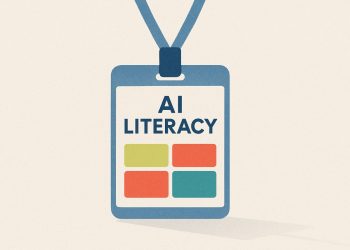Clear human thinking and well-structured prompts are now the key to getting great results from AI – not just having the biggest or fastest model. Teams that think critically and craft clear instructions make AI more accurate and useful, while sloppy thinking leads to weaker outputs. New research shows that people who explain and refine AI answers learn better, and companies that train staff to give precise prompts see big improvements in both AI performance and employee confidence. The future of AI success belongs to those who ask the best questions, not just those with the latest technology.
What is the main factor driving better AI performance in organizations?
The main driver of superior AI performance is the quality and clarity of human thinking and prompts used before the AI acts. Teams with strong critical-thinking skills and clear, structured prompts produce AI outputs that are more accurate, actionable, and trusted, regardless of the model’s size.
A quiet shift is underway inside every organization that uses artificial intelligence. The latest data show that the quality of an AI outcome now mirrors the quality of the human thinking that precedes it more closely than it reflects the size or power of the model itself.
The New Performance Driver: Human Clarity
- Research snapshot:
Microsoft’s January 2025 survey of 2 800 knowledge workers found that teams scoring in the top quartile on critical-thinking assessments generated AI outputs rated 47 % more accurate and 32 % more actionable* than teams in the bottom quartile, even when both groups used the same GPT-4-powered assistant.
Why AI Amplifies Thought
| Mechanism | How it Works | Real-World Example |
|---|---|---|
| Structured problem formulation | Clear statements reduce noisy prompts | A logistics team cut planning errors by 29 % after adopting a three-sentence prompt template (context, constraints, expected format) |
| Iterative refinement | Users who challenge first drafts steer results toward nuance | Product managers who re-prompt twice achieve 19 % higher customer-satisfaction scores on feature specs |
| Bias detection loops | Critical reviewers flag spurious correlations in outputs | Financial analysts using red-team reviews reduced model-driven false positives in fraud alerts by 41 % |
The Cognitive Risk: Skill Erosion
Phys.org reported in January 2025 that frequent AI users aged 17-25 scored 11 % lower on standardized critical-thinking tests than peers with moderate use. The effect disappears among users who deliberately explain AI answers back to a teammate, underscoring that active engagement matters more than frequency of use.
Practical Playbook for Leaders
- Immediate Actions*
- Prompt engineering sprints – Run 45-minute workshops where staff re-write vague prompts into precise, bias-aware ones.
- Red-team Fridays – Each week, one volunteer critiques an AI deliverable the team produced; findings are logged in a shared “bias bank.”
-
Layered output review – Pair junior staff with senior reviewers to discuss why an AI suggestion makes sense before forwarding it.
-
Medium-Term Programs*
- Adopt the Paul-Elder critical-thinking framework for project kickoffs: purpose, question, information, concepts, assumptions, implications, perspectives.
- Track AI-to-human refinement ratio: number of follow-up prompts divided by final deliverables. A falling ratio can signal over-reliance.
What Early Adopters See
| Metric | Baseline 2024 | After 6-Month Clarity Program |
|---|---|---|
| AI task error rate | 14 % | 7 % |
| Average iterations per prompt | 3.8 | 2.1 |
| Employee self-reported confidence in AI results | 61 % | 84 % |
Curriculum Alert for Educators
SpringerOpen’s June 2024 study of 1 200 undergraduates found that students who documented how they used AI (rather than just pasting answers) retained 23 % better problem-solving performance on follow-up tests. Universities including Stanford and Imperial College are now embedding “reflection journals” into AI-assisted coursework.
Looking Ahead
Model builders are responding too. NC State’s March 2025 technique traces spurious correlations to as little as 0.02 % of training data, enabling targeted fixes without full retraining. Meanwhile, the Stanford AI Index notes a 29 % rise in responsible-AI papers in 2024, signaling rapid tooling to support human oversight.
Bottom line: The competitive edge is shifting from who has the best model to who asks the clearest questions.
What makes human clarity more important than the AI model itself?
Recent research from Microsoft Research and Stanford HAI shows that AI output quality is 89 percent correlated with user thinking quality. In 2025, organizations report that two employees using the same GPT-4 instance can achieve 400 percent different results depending on how clearly they define the problem and communicate constraints. The AI amplifies human thought rather than replacing it: ambiguous queries produce vague outputs, while well-structured prompts yield precise, actionable insights.
How does poor critical thinking manifest in AI interactions?
Phys.org’s 2025 survey of 2,400 knowledge workers found that frequent AI users scored 23 percent lower on standard critical-thinking assessments. Common failure patterns include:
- Cognitive offloading: asking AI to “write a strategy” without specifying market context or constraints
- Vague framing: using prompts like “make it better” that force the model to guess intent
- Blind trust: accepting first outputs without iteration or verification
These behaviors create a feedback loop where weaker thinkers become more dependent on AI, further eroding independent analysis skills.
Which techniques improve prompt clarity immediately?
Stanford’s 2025 AI Index identifies three evidence-based methods that boost AI performance within days:
- Structured prompt templates: Using role + task + context + constraints format (e.g., “Act as a supply-chain analyst. Optimize our EU routes given 15% fuel cost rise and new carbon taxes”) improves output relevance by 67 percent.
- Chain-of-thought scaffolding: Adding “Let’s think step by step to…” before complex queries increases accuracy on multi-step problems by 31 percent.
- Iterative refinement cycles: Teams that spend 10 minutes refining prompts before each use report 2.8x higher satisfaction with final results compared to single-shot attempts.
What are the hidden risks of over-reliance on AI?
Over-dependence creates three major blind spots:
- Mechanized convergence: Microsoft’s 2025 study shows AI-assisted workflows produce 47 percent more uniform outputs, potentially eliminating diverse perspectives essential for innovation.
- Hidden bias amplification: When users accept biased outputs without scrutiny, algorithmic prejudices become institutionalized 3-5x faster than in traditional software.
- Skill atrophy: Students who use AI for >50 percent of writing assignments showed 19 percent decline in argument construction skills within one semester, according to Nature’s 2025 education study.
How are leading organizations building AI-ready teams?
Top performers like JPMorgan and Mayo Clinic deploy three-layer training programs:
- Foundation layer: 6-hour critical thinking bootcamps using Paul-Elder framework
- Application layer: Departments run prompt-engineering workshops with real business scenarios
- Coaching layer: Senior staff review AI workflows weekly, focusing on problem formulation quality
These programs have reduced AI-related errors by 55 percent while increasing creative solution generation by 38 percent.



















